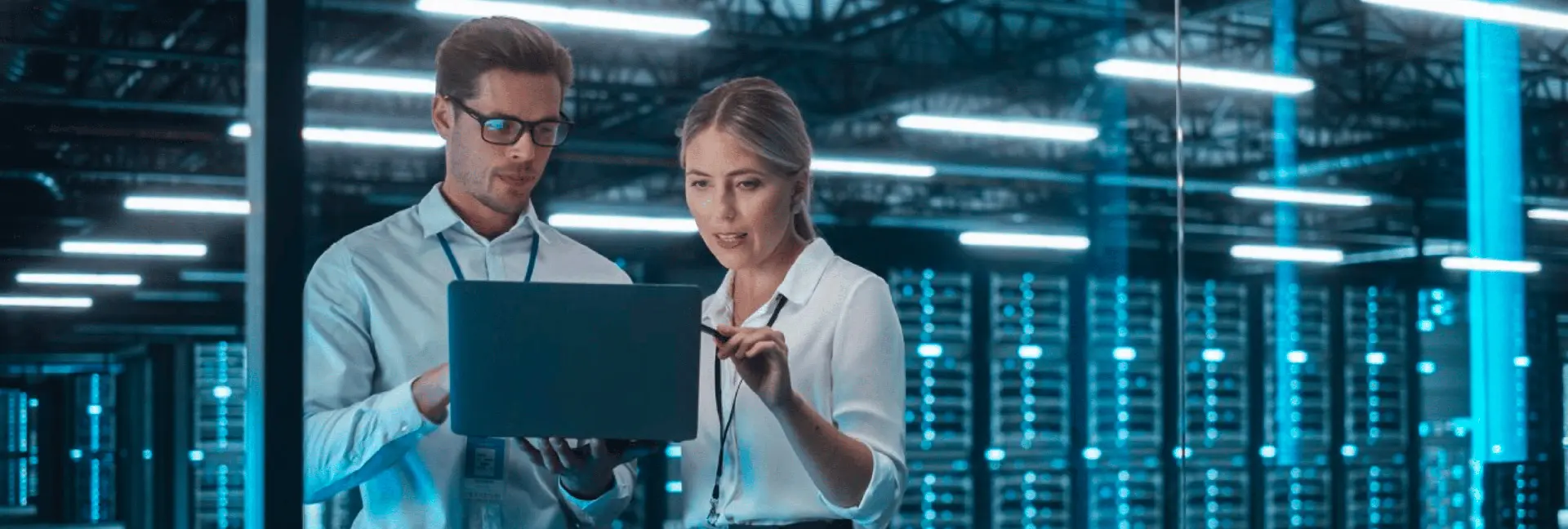As sustainability and compliance become mission-critical, modern ERP systems must do more than manage operations—they must enable lasting value. This insight explores how organisations can embed ESG alignment, regulatory compliance, and operational resilience into their ERP strategies. It outlines how to plan, design, and execute ERP transformation in ways that deliver measurable impact, minimise risk, and create long-term business value.
- Home
- About
- Services
- Strategic Excellence
- Operational
- Specialised
- Sustainable ICT Management
- Green Data Centres Management
- Human-Centred Change Leadership
- Sustainable ERP & Enterprise Systems Transformation
- Agile Operating Model Transformation
- Responsible Intelligent Automation & Conversational AI
- Innovation & Market Operations for Impact
- AI Governance, Compliance & Delivery Enablement
- Cybersecurity, Compliance & Digital Resilience
- EU Legal, Funding & Governance Foundations
- Deliverables
- Success Stories
- Insights
- FAQ
- Contact
Designing ERP Systems for Sustainability, Compliance, and Long-Term Value
Understanding Sustainable ERP Transformation
Sustainable ERP transformation begins with a clear baseline of where the organisation stands in terms of efficiency, scalability, and compliance. Through diagnostics and stakeholder workshops, organisations assess how current ERP environments align with business goals, ESG priorities, and operational requirements. These foundations provide the clarity needed to drive well-informed transformation strategies.
Stakeholder ambition alignment ensures that leadership priorities and user needs converge toward a shared vision. Structured sessions uncover expectations, surface risks, and set ERP objectives that resonate across the organisation. This collaborative clarity is key to building commitment and ensuring transformation delivers strategic impact beyond technical upgrades.
Gap analysis and compliance mapping establish confidence in regulatory alignment. ESG and EU digital regulations are evolving rapidly, and by proactively identifying risks and opportunities, organisations can mitigate non-compliance and reinforce trust with investors, auditors, and end-users.
Co-Designing for Resilience and Circular Value
ERP roadmap co-design translates ambition into actionable change. Whether using SAP, Oracle, Dynamics, or a hybrid system, sequencing upgrades around value, carbon footprint, and continuity ensures that the transformation journey remains lean, strategic, and adaptive.
Circular architecture blueprints bring sustainability to life in ERP environments. By blending cloud, on-prem, and edge solutions, these blueprints promote modularity, reuse, and energy-efficient infrastructure. ESG overlays further guide architecture decisions with transparency and traceability.
Data governance models anchor the ERP transformation. Integrated master data frameworks, incorporating materiality metrics and audit trails, help ensure consistency, cross-border operability, and insight-driven decisions that scale with business complexity.
Implementing Responsible and Agile ERP Change
Agile rollout and change orchestration help deliver transformation with minimal disruption. Iterative deployments, test coordination, and progress dashboards ensure that ERP projects stay transparent, efficient, and aligned with evolving stakeholder needs.
Responsible data migration is more than just technical. Clean, secure data flows support ESG reporting, reduce digital waste, and reinforce privacy compliance throughout the transition. These foundations elevate data as a strategic asset.
Training and adoption labs drive real business value. Focused on role-based learning and sustainability storytelling, these initiatives empower teams to own new processes, embody sustainable practices, and unlock system potential from day one.
Embedding Performance, Compliance, and Long-Term Value
Monitoring and feedback systems ensure sustainability goals are met. Dashboards and automated indicators track ESG KPIs in real-time, while quarterly scorecards keep leadership informed of compliance status and audit readiness.
Lifecycle planning and CoE enablement support long-term performance. From low-impact upgrades and component reuse to the institutionalisation of skills, methods, and communities of practice, these actions future-proof the ERP investment.
Sustainable ERP transformation is not just about implementing software — it's a strategic enabler of resilience, transparency, and ESG-driven performance across the enterprise. Done right, it creates lasting value far beyond IT.
Conclusion
Designing ERP systems for sustainability, compliance, and long-term value is a strategic imperative for modern organisations. By combining diagnostics, stakeholder alignment, circular architecture, agile execution, and embedded performance monitoring, enterprises can unlock ERP environments that are not only efficient and resilient but also ESG-aligned and future-ready. These practices help reduce transformation risk, accelerate adoption, and ensure that technology investments deliver measurable impact. With a long-term roadmap and Centre of Excellence in place, ERP becomes a continuous source of insight, compliance, and sustainable business performance.
Related Specialized Insights
Broaden your understanding—see how Sustainability & Value in ERP connects to other key Specialized Insights.

Enabling Compliant Delivery and Long-Term Readiness for EU-Funded Transformation
Once legal, funding, and governance foundations are established, organisations face the more challenging task of activating compliant delivery structures and sustaining long-term readiness for EU-funded programmes. Many initiatives struggle during im...
Shaping EU-Ready Legal and Governance Foundations for Strategic Transformation
Organisations aiming to participate in EU programmes often struggle with legal uncertainty, fragmented governance structures, and limited clarity on eligibility and funding requirements. Without a clear understanding of existing contractual framework...
Advancing Cybersecurity Resilience and Continuous Compliance Across the Digital Ecosystem
As organisations scale their digital capabilities, maintaining strong cybersecurity, regulatory compliance, and operational resilience becomes a continuous endeavour rather than a one-off implementation. Modern digital ecosystems span cloud platforms...
From Risk to Readiness: Shaping Cybersecurity, Compliance and ESG-Aligned Resilience Foundations
Organisations face increasing pressure to secure complex digital ecosystems while navigating expanding regulatory demands, ESG expectations, and rapidly evolving threat landscapes. In this environment, cybersecurity resilience becomes a strategic cap...
Embedding Trust and Sustainability in AI Delivery and Evolution
Translating responsible AI strategies into practice is the decisive test of organisational trust, compliance, and sustainability. Even the most carefully designed frameworks risk losing credibility if governance and ethical safeguards are not embedde...
From Ambition to Assurance: Designing Responsible AI Governance and Compliance Frameworks
Organisations are increasingly eager to embrace AI, but without structured governance, compliance frameworks, and strategic alignment, ambition alone is not enough. In a fast-evolving regulatory environment shaped by the EU AI Act and global ESG com...
Scaling Innovation and Market Operations for Sustainable Growth
Many organisations succeed with innovation pilots but fail to scale them sustainably across markets and operations. This is often due to a lack of governance, resilience, and capability-building. Understanding and implementing these key factors is cr...
From Readiness to Impact: Building Innovation Strategies that Deliver
Innovation initiatives often begin with energy and ambition but risk faltering without a clear baseline, structured frameworks, and impact-driven cases. In complex, multi-stakeholder environments, organisations must first align strategy, stakeholders...
From Efficiency to Trust: Embedding Responsibility in Intelligent Automation & Conversational AI
In many organisations, automation has been pursued narrowly as a tool for efficiency, speeding up workflows, cutting costs, and reducing manual effort. Yet without responsibility, ethics, and compliance at the core, these gains are fragile, exposing ...
Scaling Human-Centred AI: Sustainable Adoption of Conversational Automation at Enterprise Level
Many enterprises succeed with small-scale AI pilots, but struggle to scale conversational automation sustainably across the organisation. Without structured governance, workforce readiness, and human-centred adoption, pilots risk fragmentation, compl...
Embedding Agility and Sustainability into the Core Operating Model
To deliver value in complex, regulated, and fast-evolving environments, organisations must go beyond initial transformation and ensure that agility is deeply embedded. That means making agility measurable, sustainable, and aligned with strategic, re...
From Strategy to Flow: Building Agile Operating Models That Deliver
In today’s fast-changing landscape, traditional delivery models often fall short, are slow to respond, are siloed, and are misaligned with strategic priorities. Agile operating models offer an adaptive alternative, enabling organisations to turn stra...
Empowering Scalable ERP Transformation with ESG-Embedded Leadership and Architecture
To achieve enterprise-wide sustainability and resilience, ERP transformation must be rooted in ESG-embedded leadership and circular architecture. This insight explores how leadership alignment, responsible data design, and agile governance enable sca...
Embedding Resilience and Culture in Organisational Change
Embedding resilience and culture into change initiatives is vital to sustaining transformation impact and ensuring long-term success. Human-centred leadership helps organisations navigate complexity by anchoring change in shared values, inclusive beh...
Building Trust and Alignment Through Human-Centred Leadership
In today's fast-changing digital landscape, trust, inclusion, and leadership resilience are essential for successful transformation. Human-centred change leadership places people at the heart of ICT-driven initiatives by focusing on empathy, alignmen...
Enhancing Digital Resilience with Green Data Centres
As digital infrastructure becomes increasingly critical to business continuity, resilience and sustainability must be embedded into the core of data centre strategy. Green data centres offer a future-proof approach, ensuring reliable and secure opera...
Designing Green and AI-Ready Data Centres
As digital transformation accelerates and sustainability becomes a top priority, enterprises must rethink how their data infrastructure supports both goals. Green and AI-ready data centres offer a dual advantage: they reduce environmental impact whil...
Achieving Sustainability Goals with ICT Solutions
Achieving sustainability goals is crucial for modern enterprises. ICT solutions play a significant role in this effort and bring tangible benefits, helping organizations reduce their environmental impact, enhance corporate social responsibility, and ...
Implementing Circular Economy Principles in ICT Operations
Incorporating circular economy principles into ICT operations is an innovative approach for modern enterprises aiming to enhance sustainability. This article explores strategies for designing ICT products and processes, prioritizing longevity, reusab...Check all our insights, backed by expert analysis, to stay ahead with the latest industry trends and best practices.
Related Specialized Services
Discover services that support and enhance insights on Sustainability & Value in ERP:
We embed sustainability into the core of ICT systems by aligning digital infrastructure with environmental and social responsibility goals. Through comprehensive sustainability assessments and tailored Green ICT strategies, we help reduce environmental impact, advance regulatory compliance, and strengthen your organization's commitment to long-term value and responsible innovation.
We empower organizations to transition their data centre infrastructure toward sustainability and resilience. Our services include greenfield development, brownfield optimization, and AI-ready architectural planning, all designed to reduce environmental impact, ensure regulatory compliance, and future-proof your ICT backbone for long-term, responsible growth.
We place people at the heart of ICT-driven transformation by equipping executives and teams with inclusive leadership practices that build trust, resilience, and shared purpose. Through diagnostics, co-design, coaching, and culture anchoring, we accelerate change readiness, strengthen engagement, and deliver sustainable, high-impact results.
We embed sustainability at the core of business process and enterprise system transformation by aligning platforms, data, and teams with environmental, regulatory, and operational goals. Through ESG diagnostics, inclusive roadmaps, responsible data strategies, streamlined global operations, and stakeholder enablement, we drive scalable, cross-border change that delivers long-term resilience and value.
We empower organisations to move beyond project bottlenecks to a measurable, flow‑based operating model. Starting with targeted diagnostics and executive alignment, we co‑design an Agile Target Operating Model, lean portfolio governance and scalable practices (SAFe, Disciplined Agile). Through enablement and coaching, your teams deliver the right work faster, with transparency, regulatory confidence and a path to continuous improvement.
We guide organisations to harness AI assistants and intelligent workflows responsibly. Starting with readiness diagnostics and leadership alignment, we co-design ethical automation blueprints, governance frameworks, and conversational experiences. Through pilot delivery, human-in-the-loop enablement, and capability building, your teams achieve measurable efficiency, enhanced customer and employee experience, and regulatory confidence, while ensuring sustainable, future-ready adoption.
We enable organisations to design, test, and scale innovation strategies while strengthening market operations in complex environments. Starting with readiness diagnostics and stakeholder mapping, we co-develop impact-driven business cases, market entry strategies, and competitiveness frameworks. Through pilot execution, operational turnaround, and capability building, your teams achieve sustainable growth, resilience, and long-term impact, supported by governance, monitoring, and adaptive roadmaps that make you feel flexible and responsive.
We enable organisations to adopt AI responsibly by aligning with regulatory, ethical, and sustainability standards. Starting with diagnostics and stakeholder mapping, we co-develop governance frameworks, compliance cases, and ESG-aligned architectures. Through pilots, compliance controls, and multi-cloud delivery enablement, teams gain confidence and readiness. Supported by continuous monitoring, adaptive governance, and sustainability roadmaps, your organisation secures long-term trust, measurable business impact, and resilience in AI-driven transformation.
We help organisations strengthen cybersecurity, ensure regulatory and ESG alignment, and build sustainable digital resilience. Starting with diagnostics and leadership alignment, we co-design secure architectures, governance frameworks, and ESG-integrated strategies. Through secure engineering, testing, pilots, and capability building, teams embed security-by-design and resilience into operations. Supported by adaptive governance, continuous performance monitoring, and sustainability roadmaps, your organisation achieves long-term security, compliance readiness, continuity, and impact.
We help organisations align with EU programmes and rules by diagnosing legal and funding baselines, co-designing governance and contractual frameworks, and enabling compliant delivery. Through documentation, pilot activation, capability building, and adaptive assurance, your teams gain accountability, competitiveness in calls, and long-term institutional readiness for EU-funded transformation.
Check all our services backed by our expertise to support your business transformation and drive success.
Ready to transform your business? Contact Us